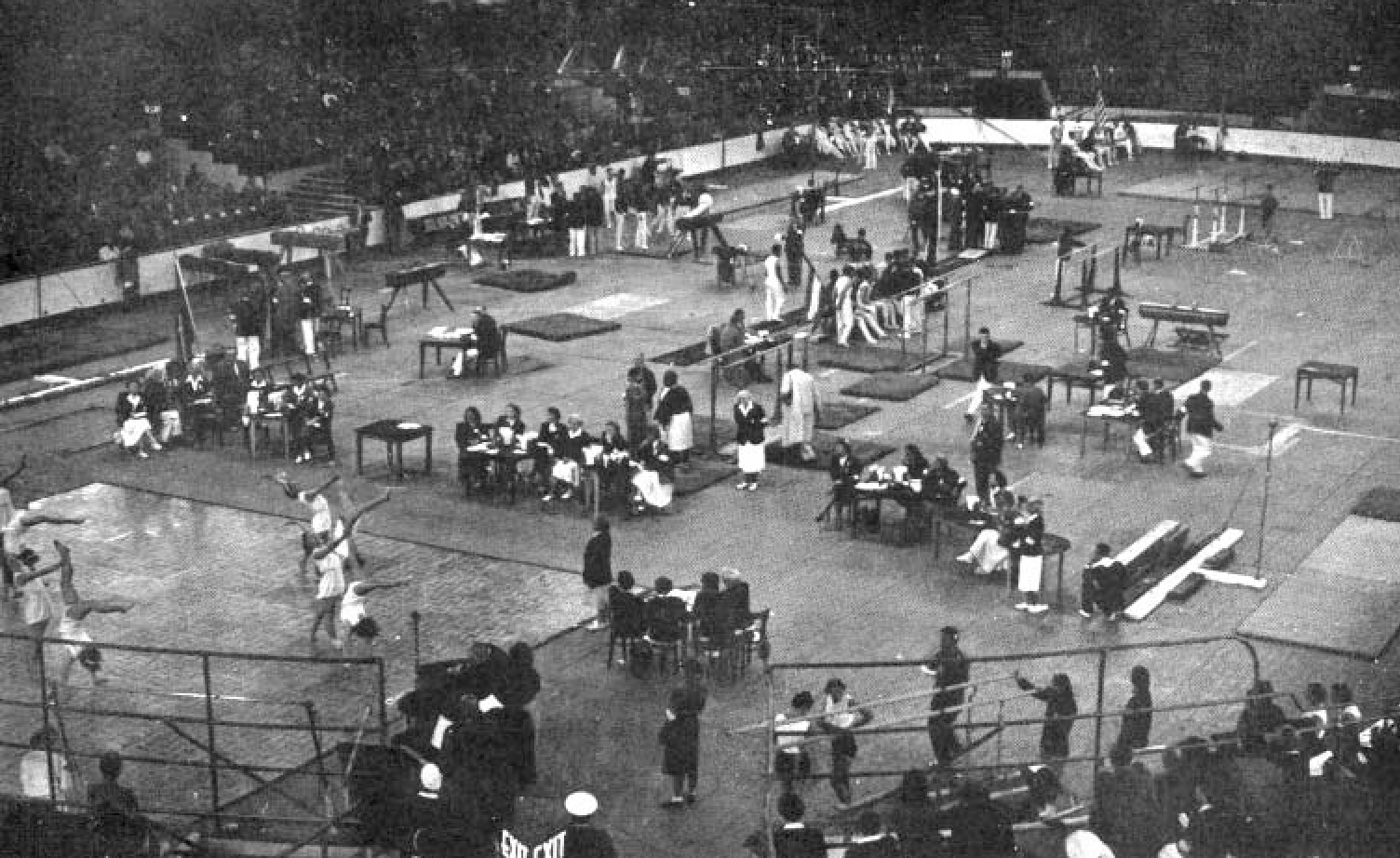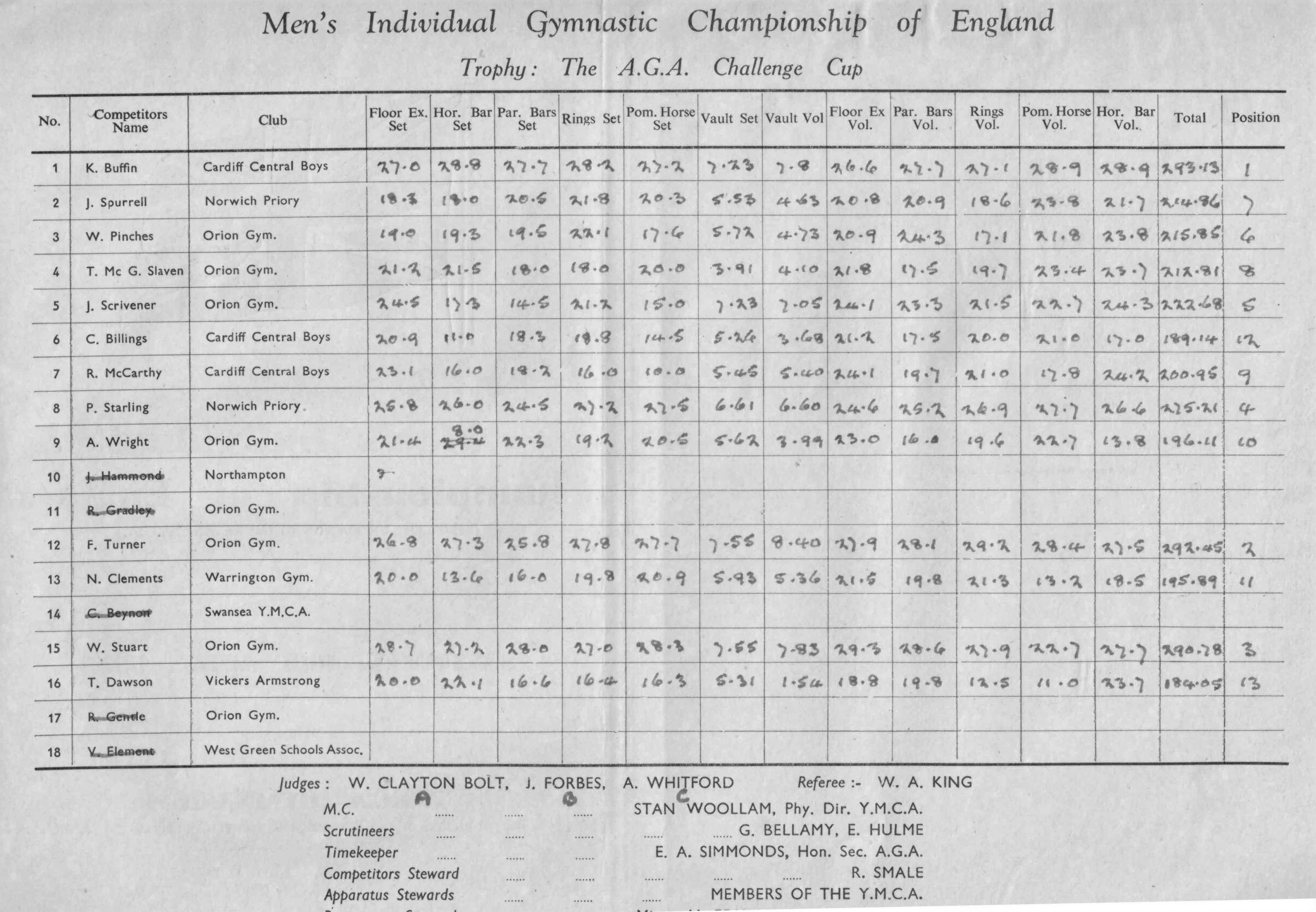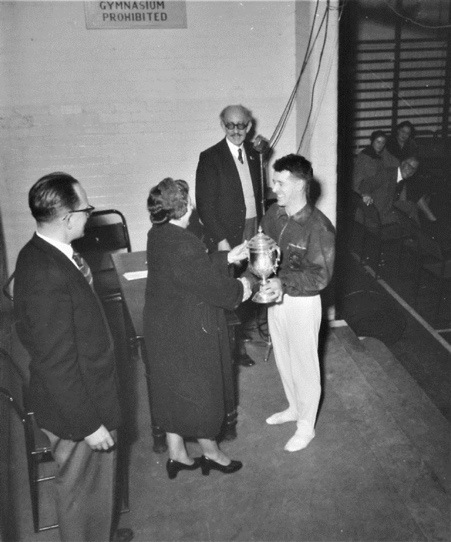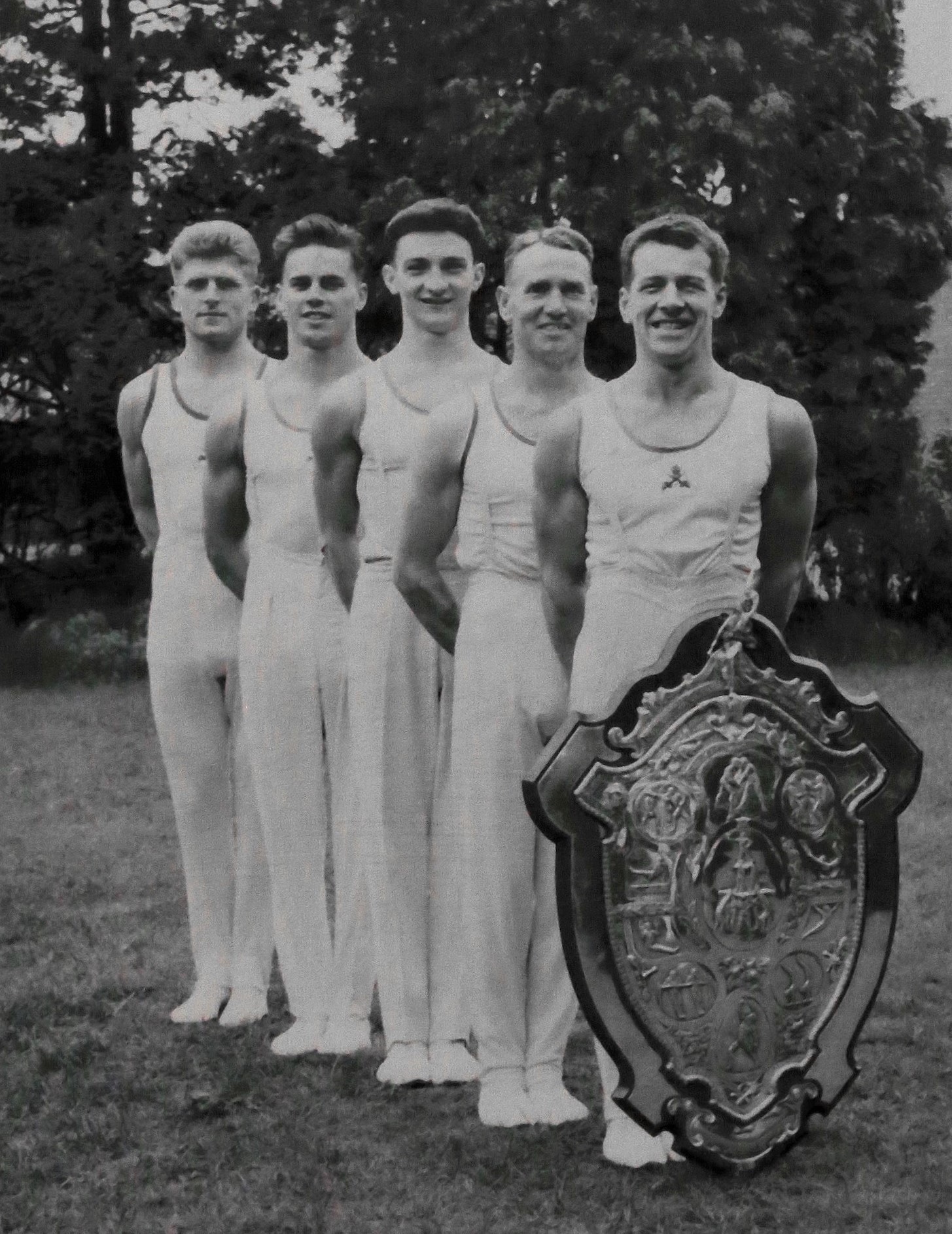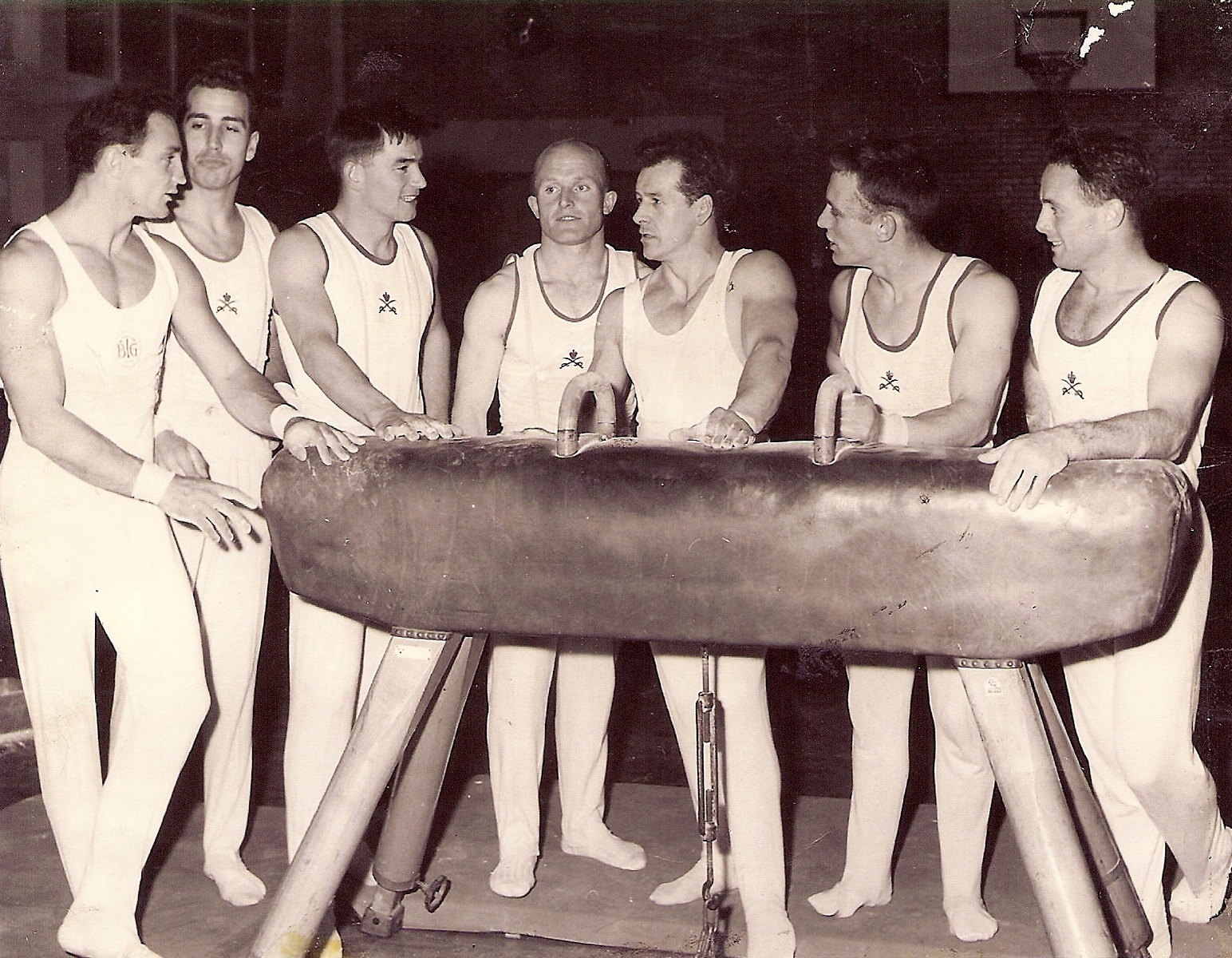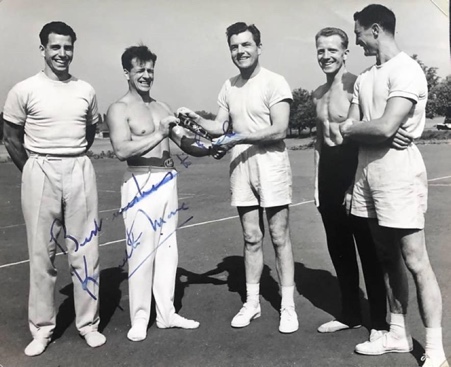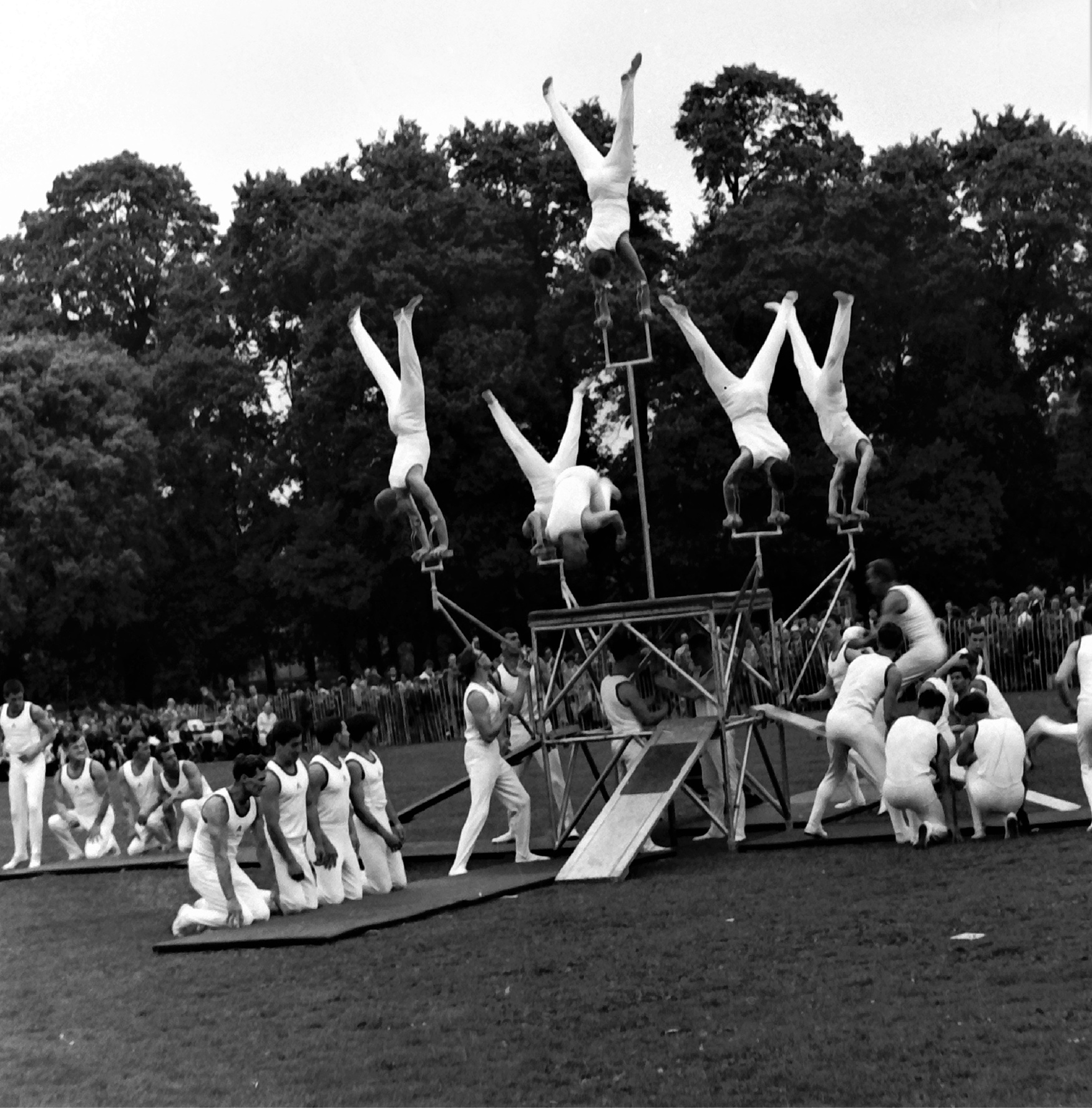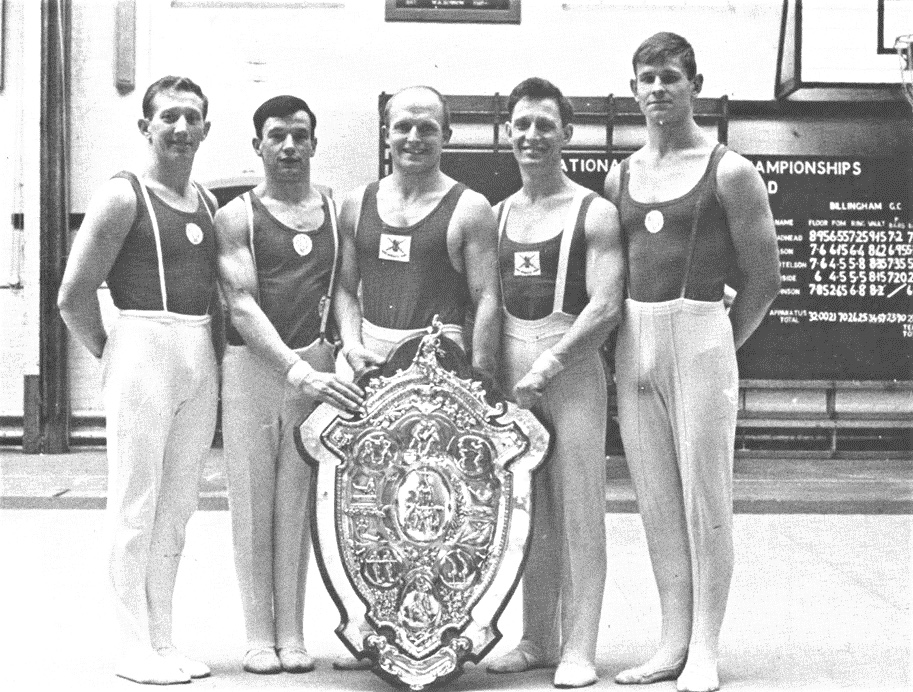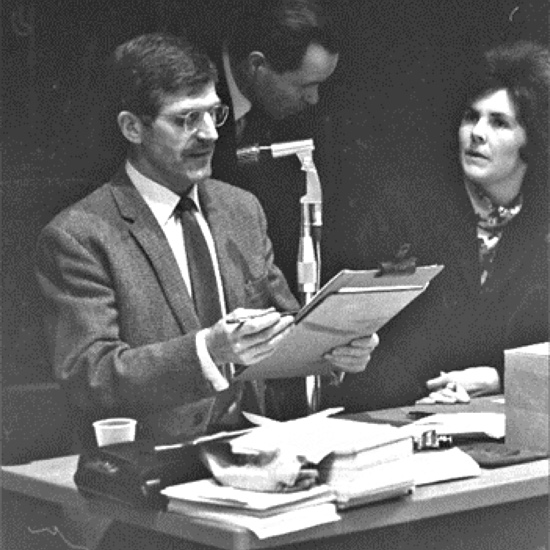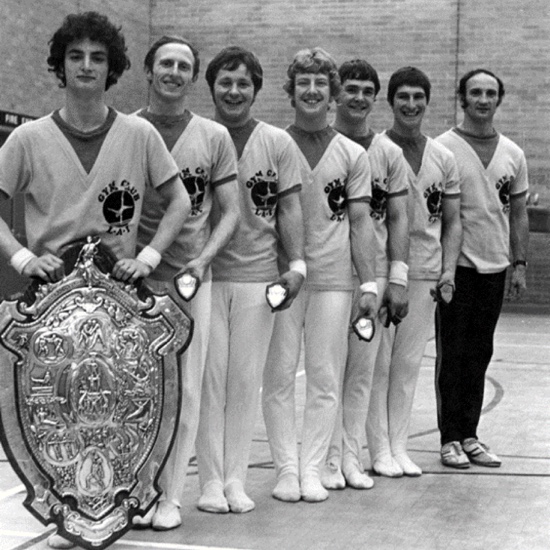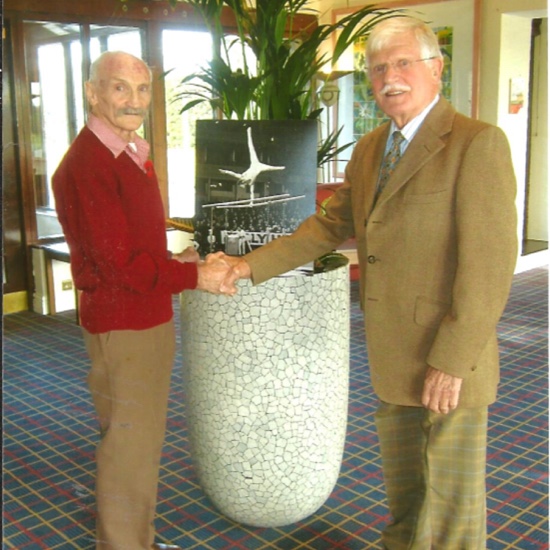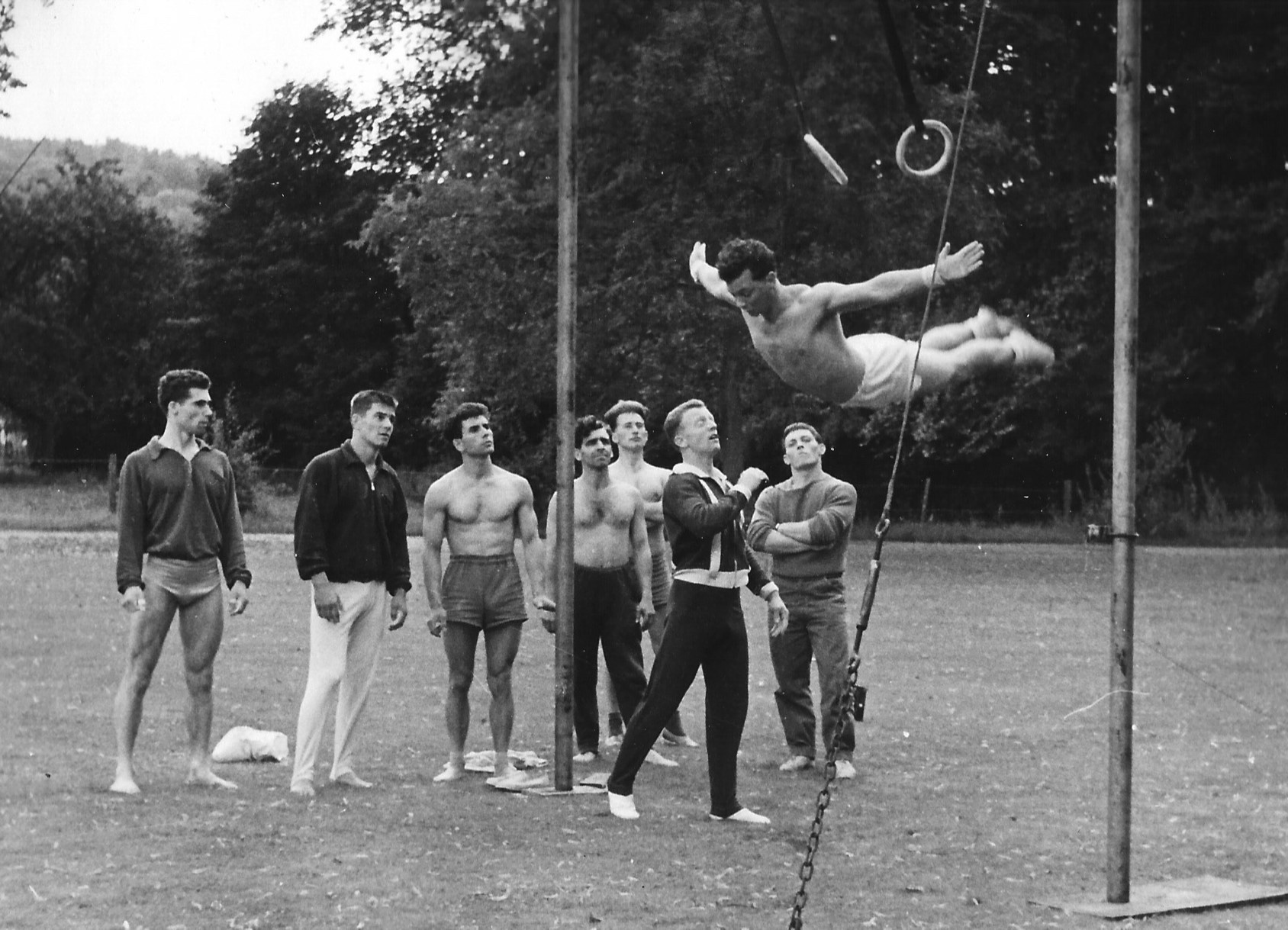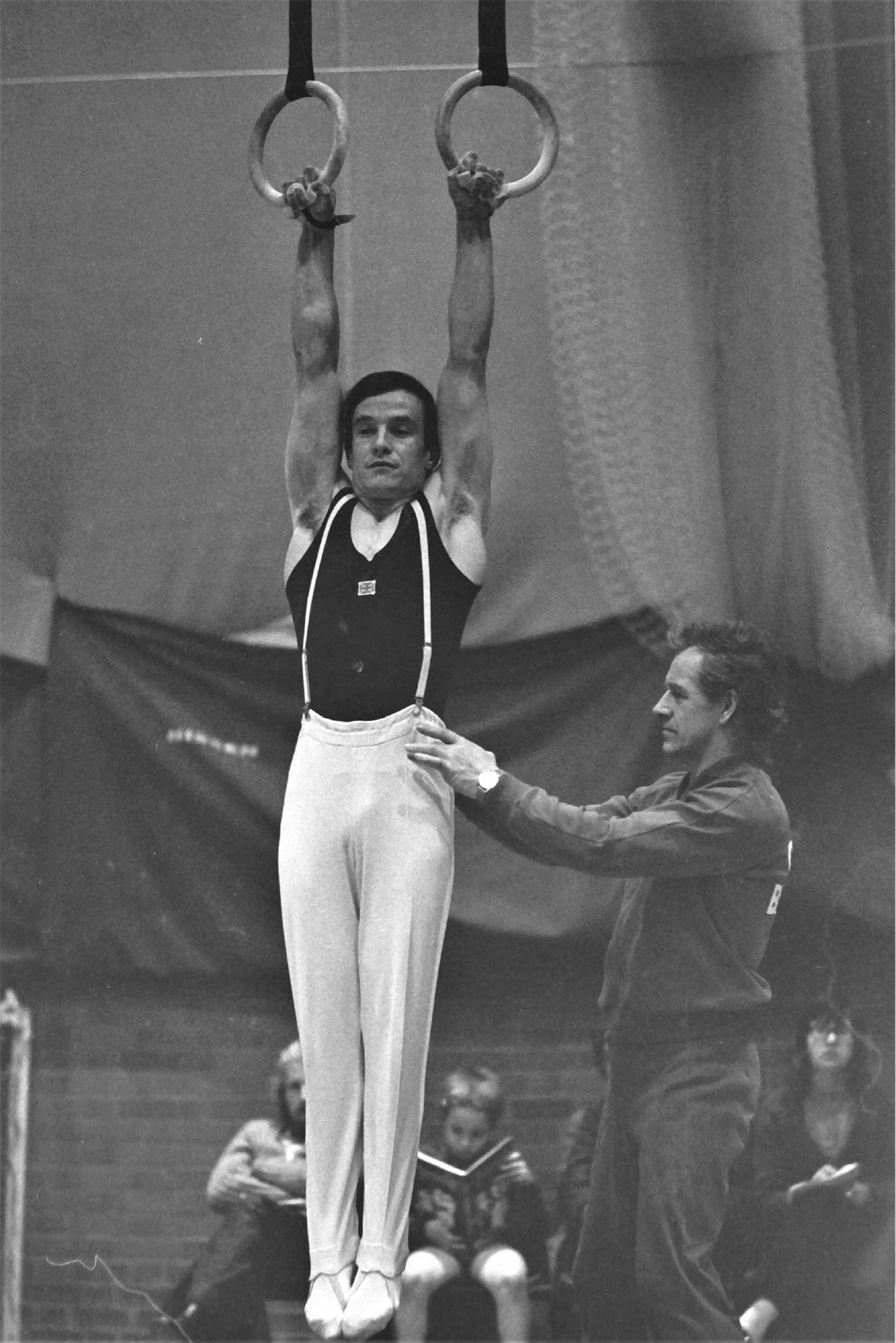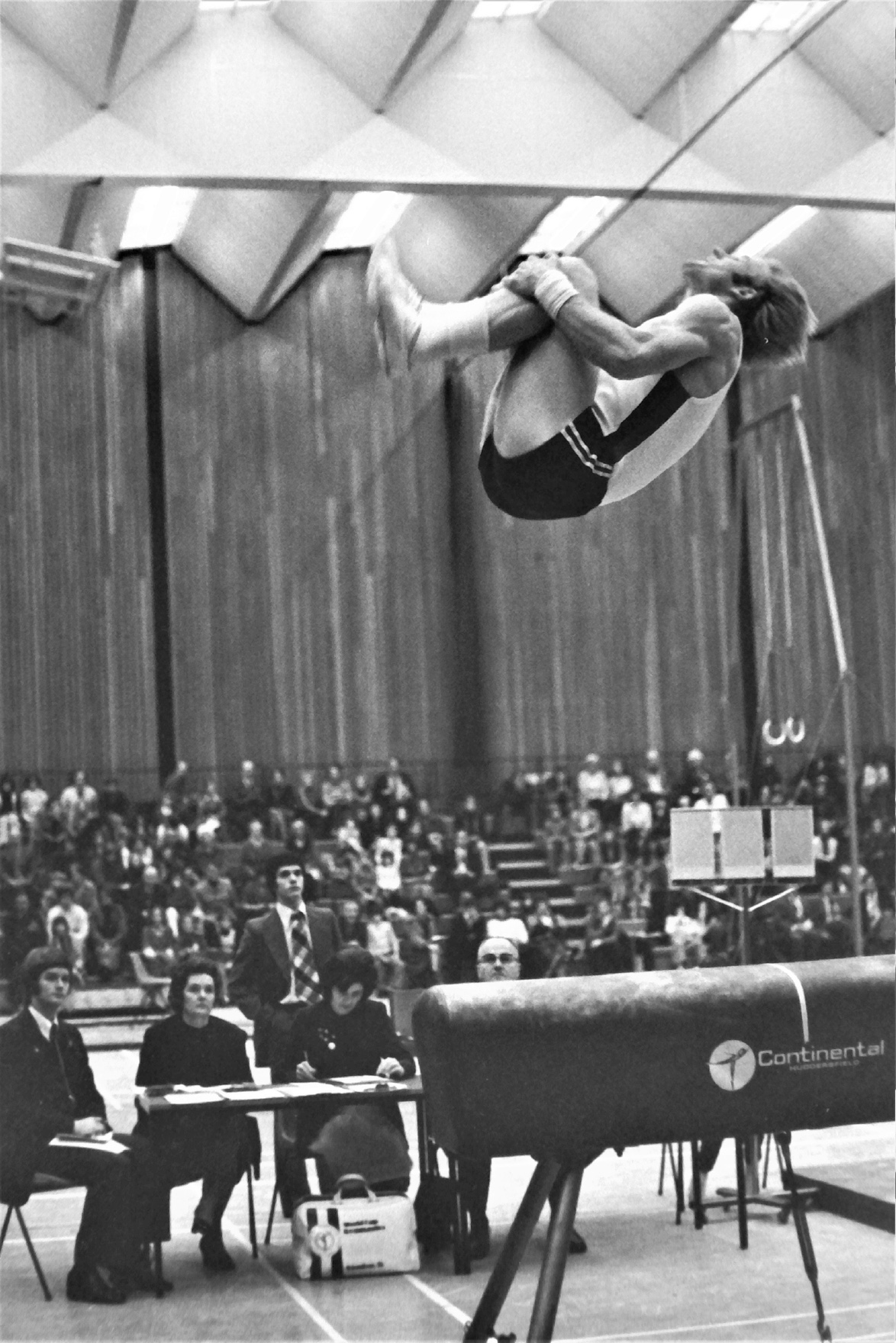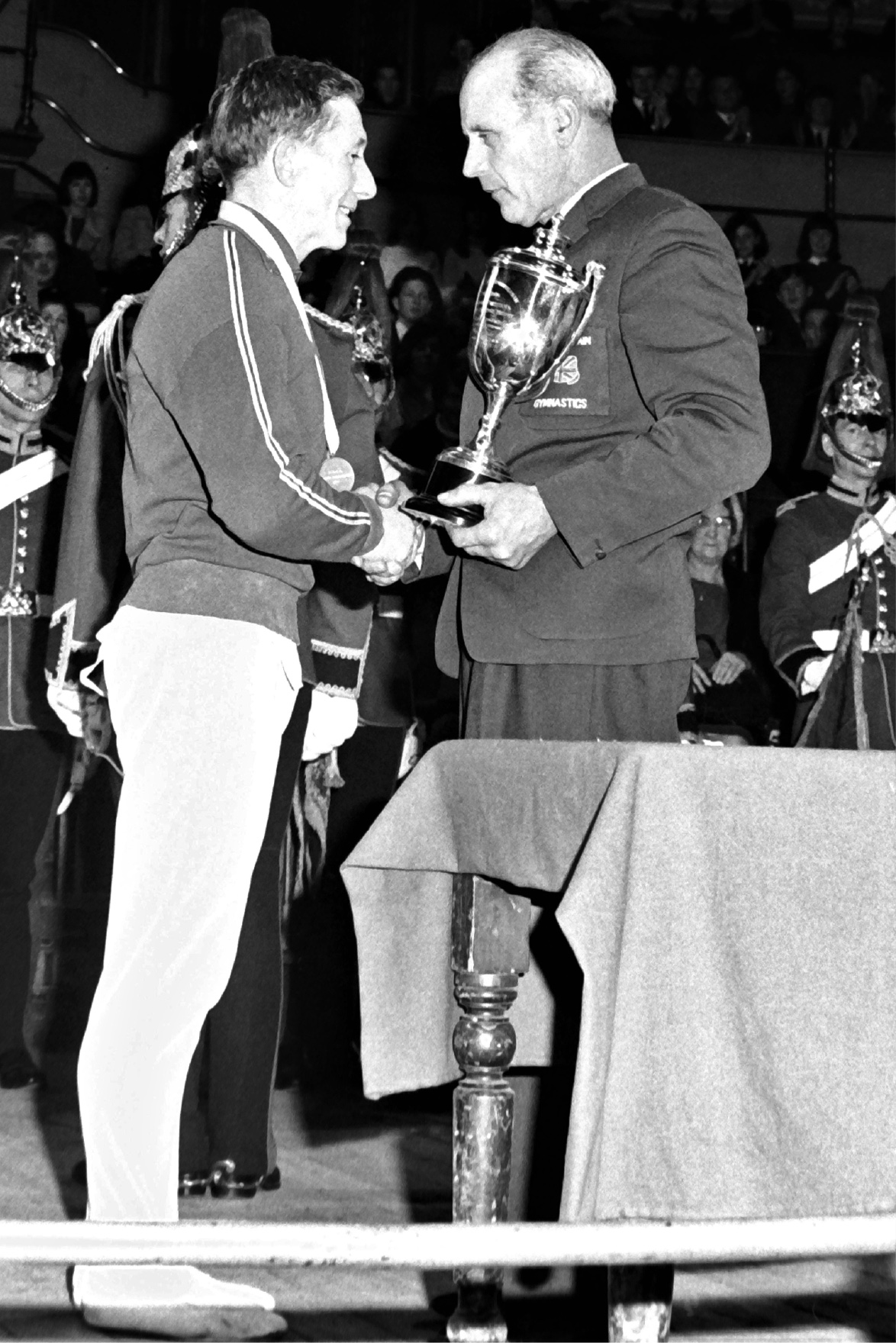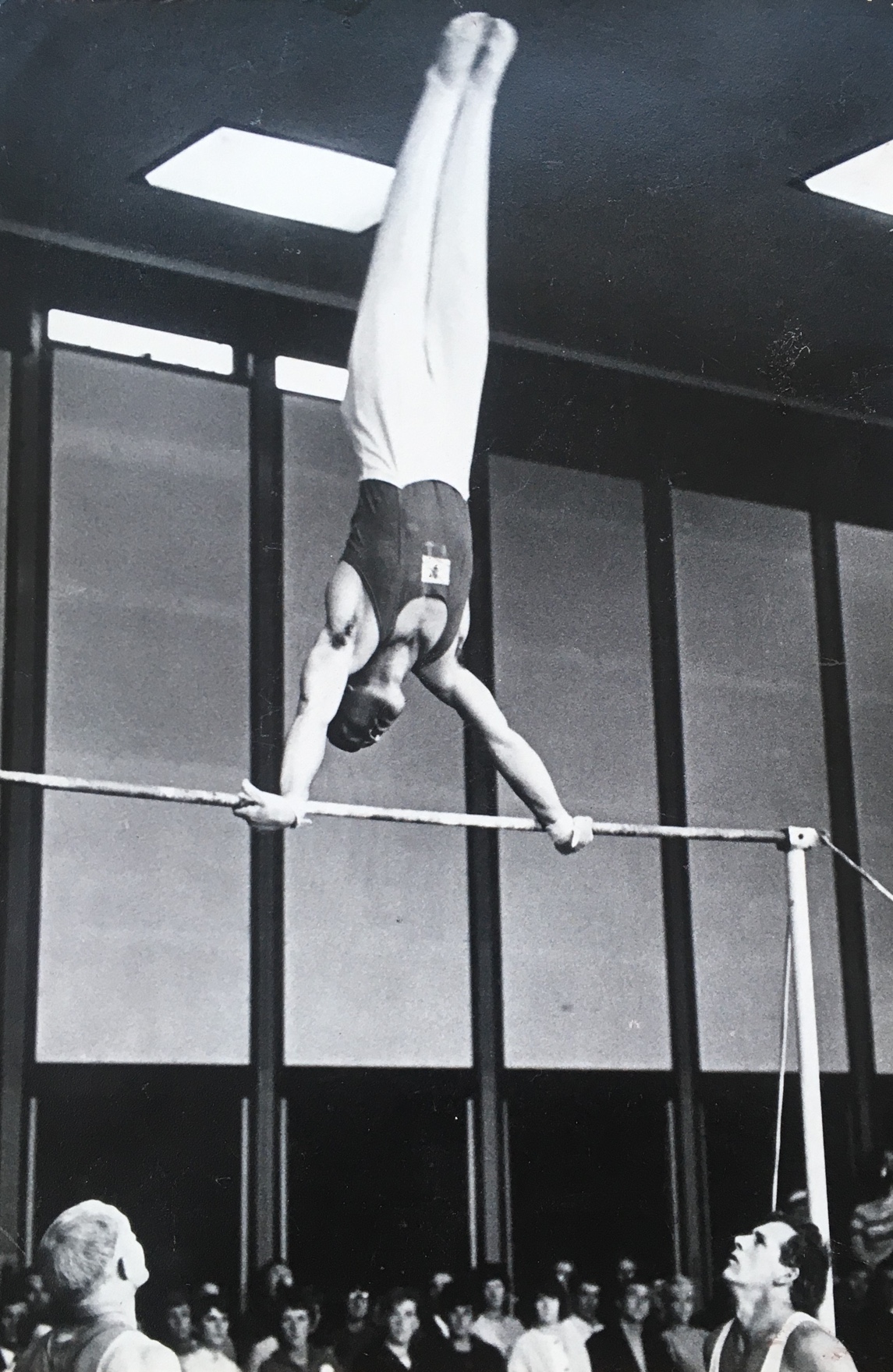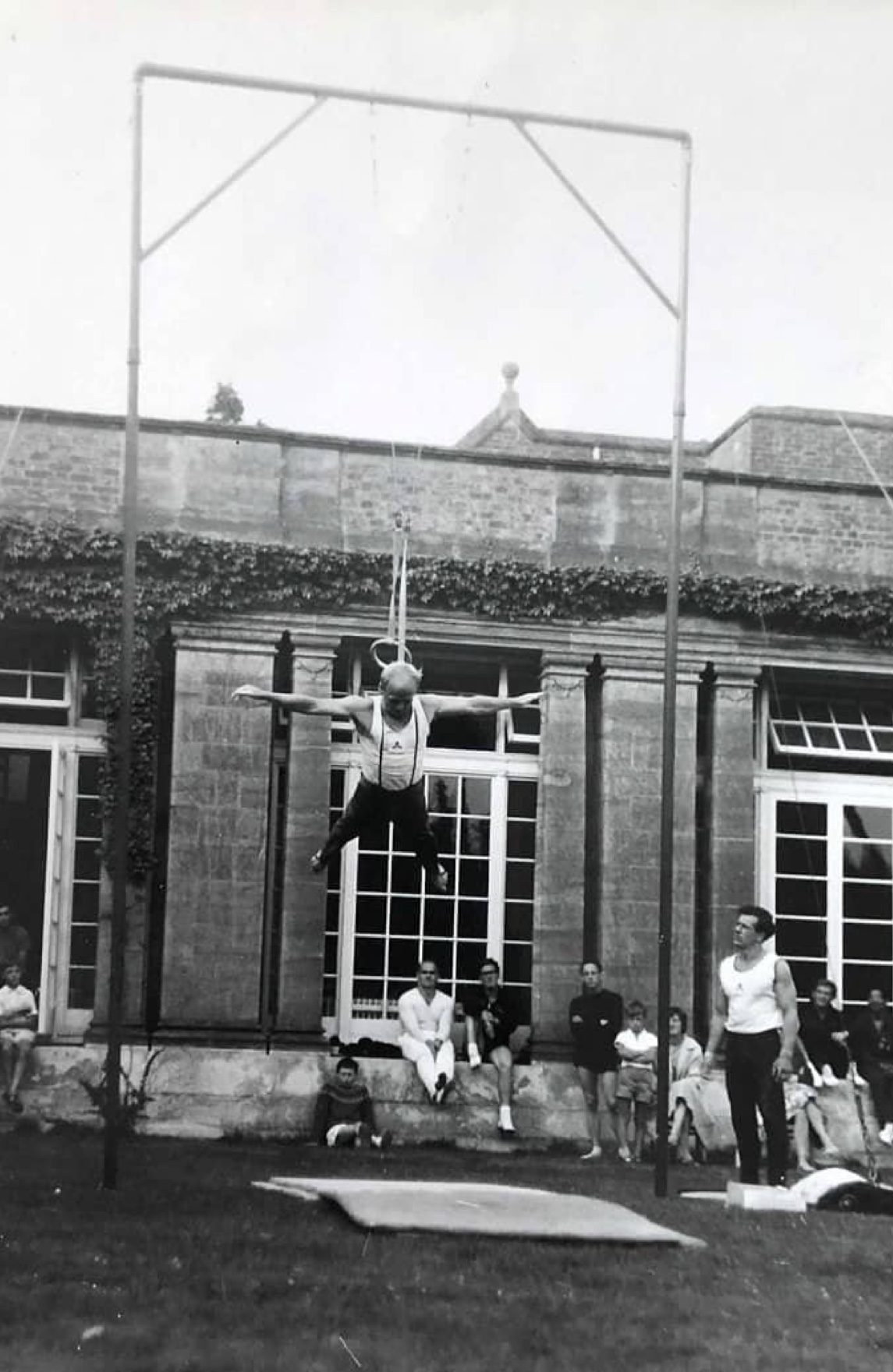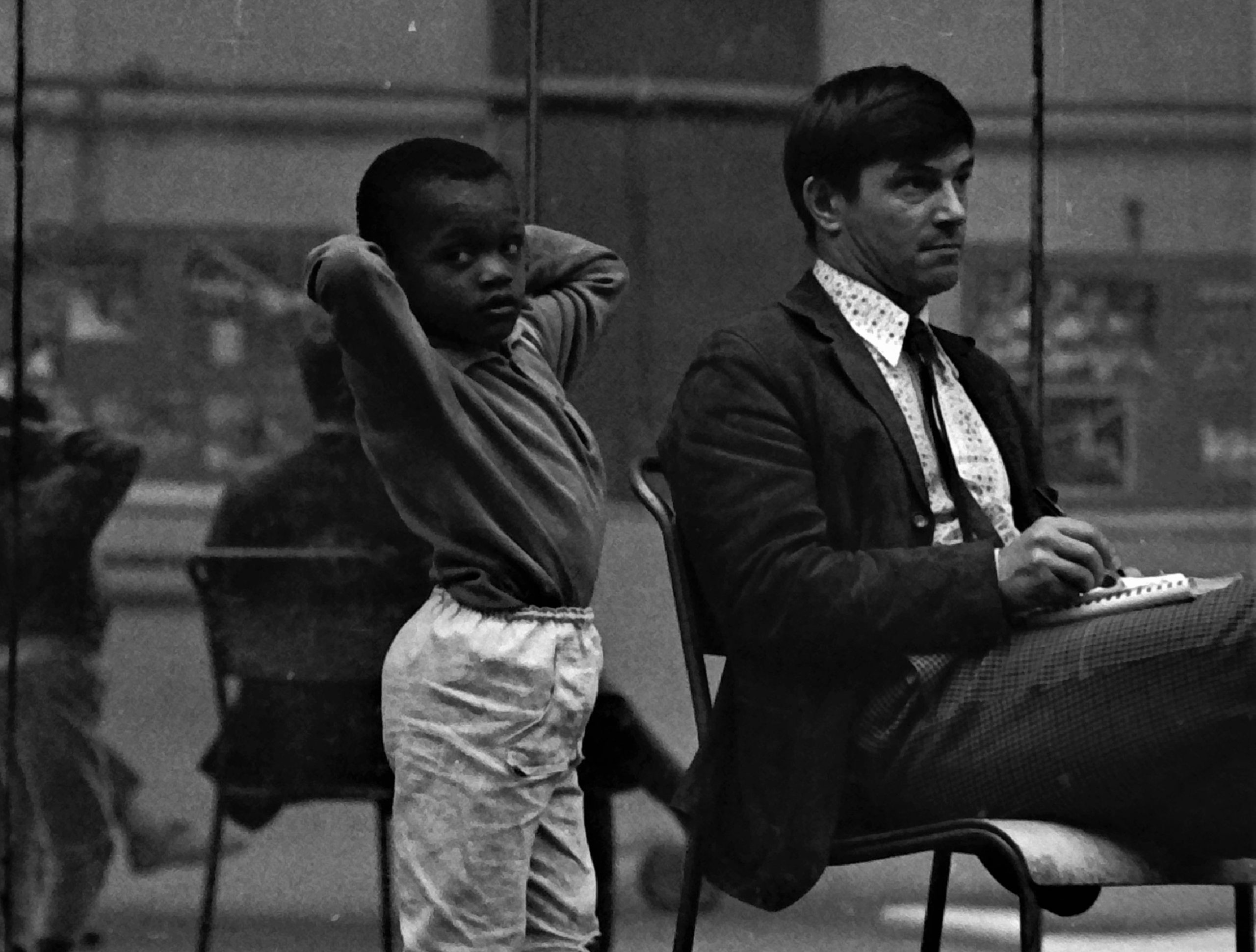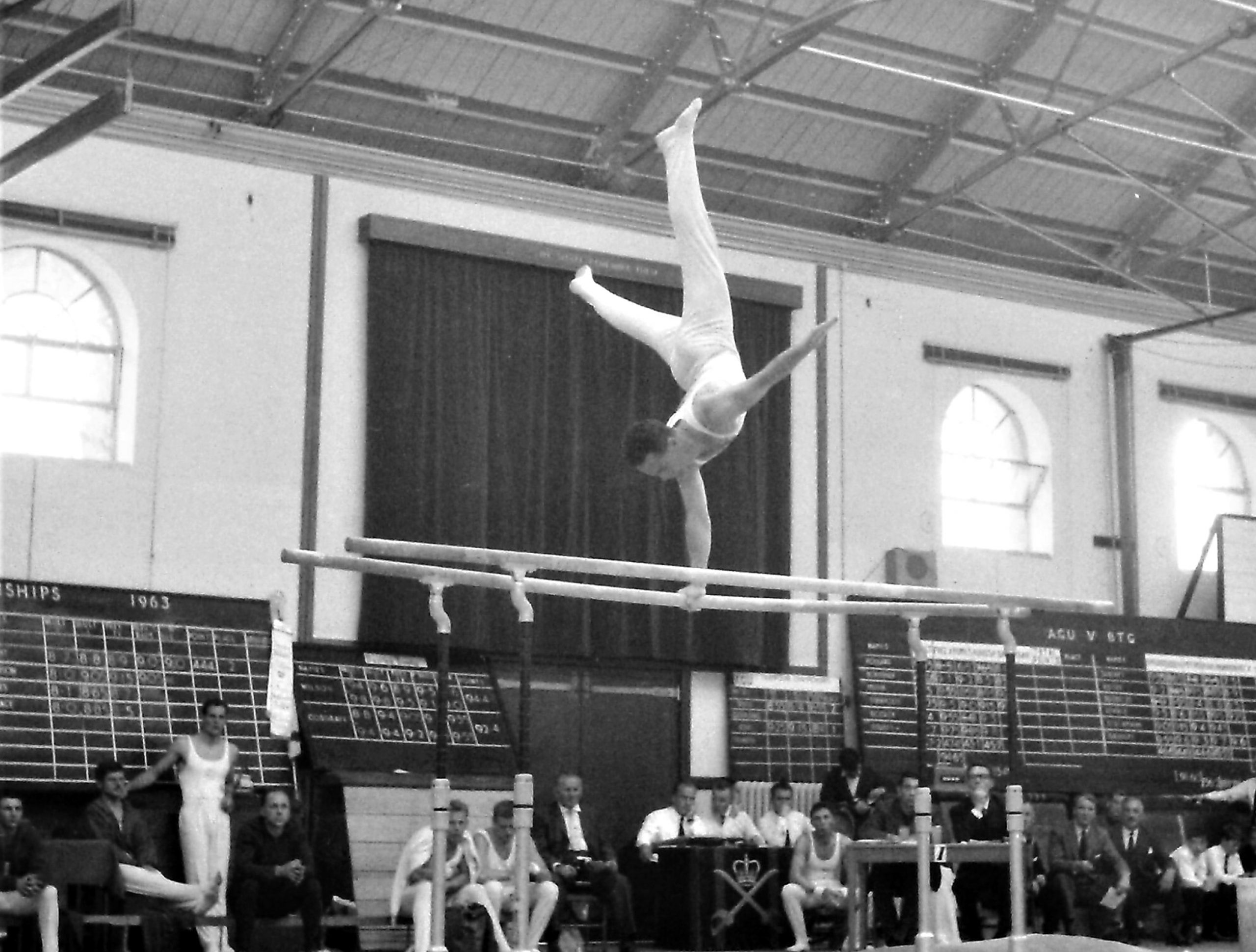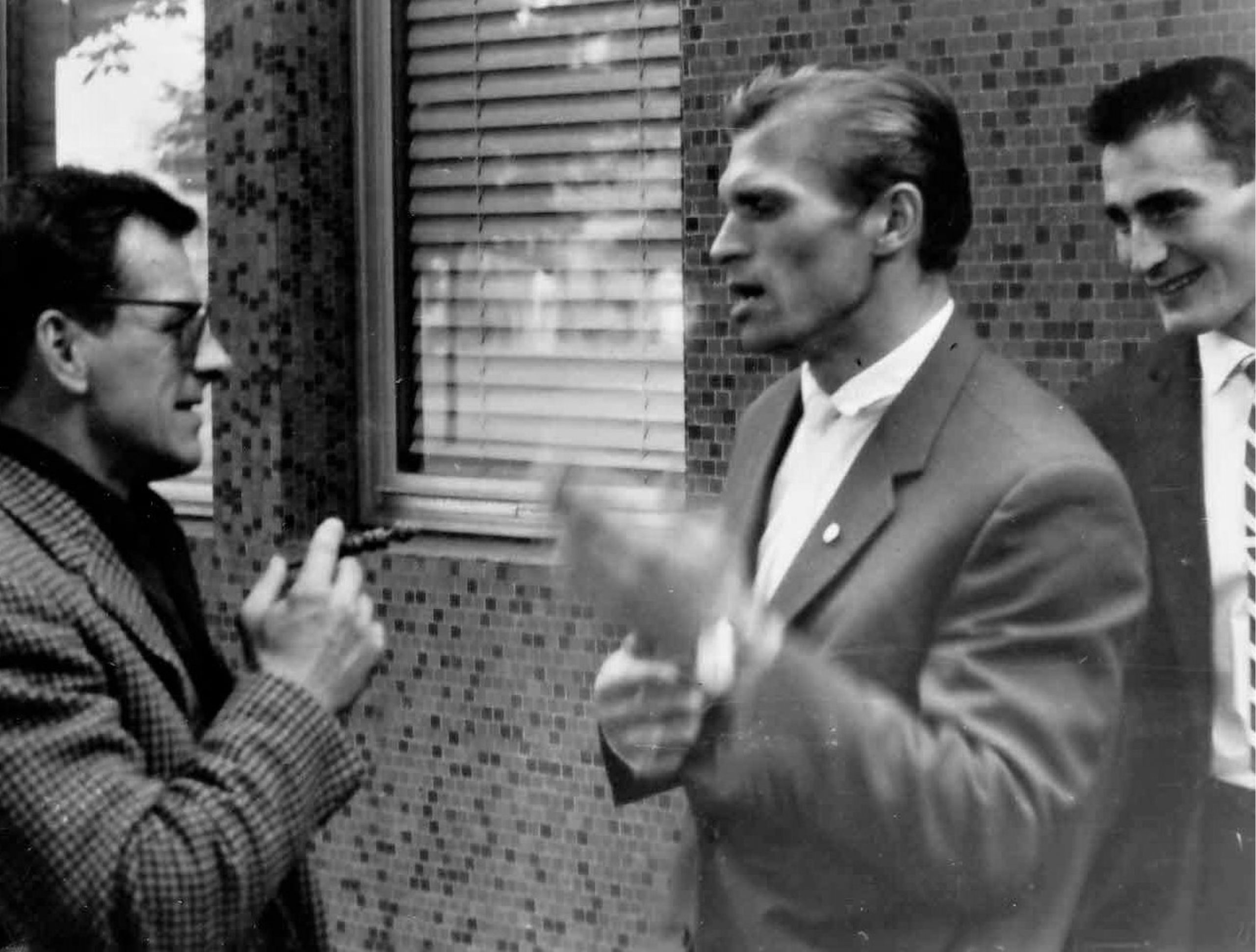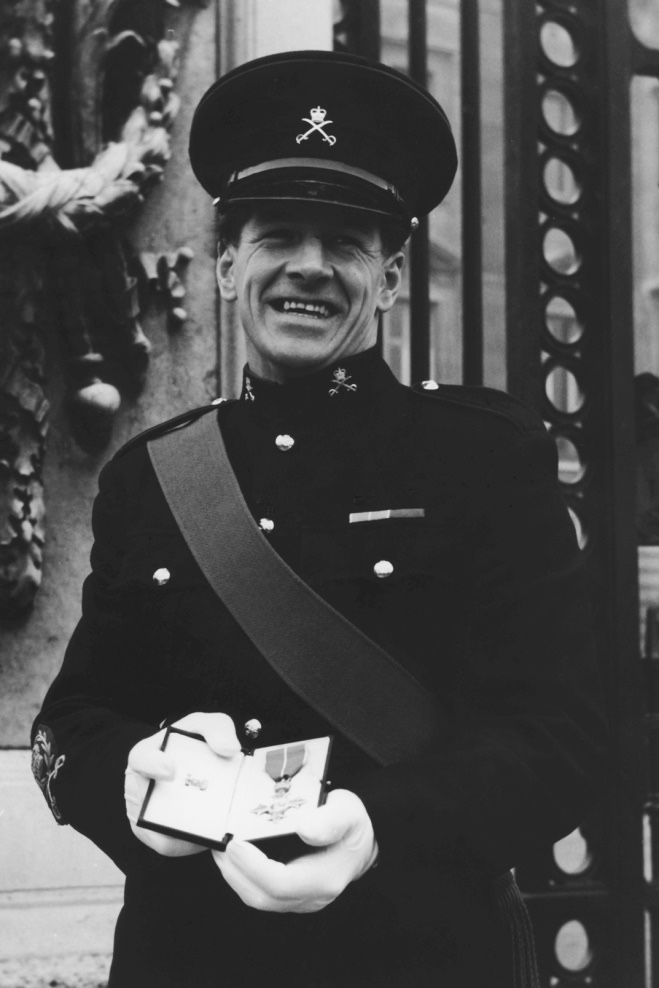The Army Gymnastic Union – its members and their impact on British Gymnastics
The AGA at its lowest point
After the 1939 – 1945 war, the Amateur Gymnastics Association, the AGA (what we now know as British Gymnastics) was possibly at its lowest point in the history of the Association. There had been the threat in 1945 by the Education Board regarding the use of apparatus in evening institutes; should it be allowed? At one point in 1943, it was decided by the forerunner to the Sports Council or UK Sport that gymnastics was not a sport.
After the 1945 meeting, the AGA felt that they must bring their activities before the general public to a much greater degree than before and so create the demand for apparatus work in youth clubs, evening classes etc.
Attempts were made. Of course, there was the 1948 Olympics in London where full teams of British men & women competed, but there was nothing to excite the public. Various international events occurred, but they must have gone pretty much unnoticed judging by the comments of the day.
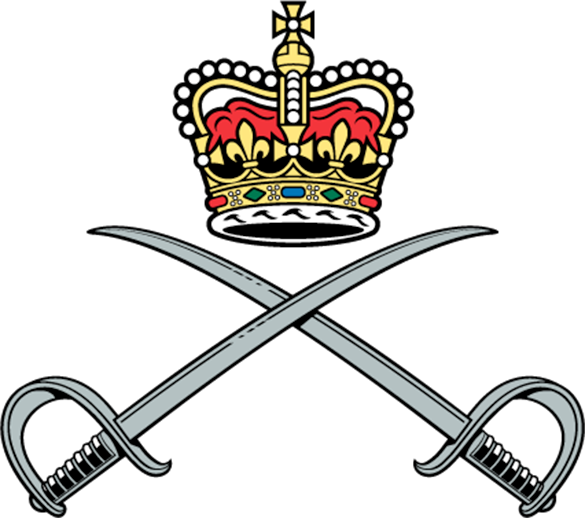
Something special happened
In 1955 the Men’s National Championships took place at the Central YMCA London where there were possibly 200 people in the audience; it couldn’t hold any more than that.
There were six gymnasts entered from the Orion Gym based at Bethnal Green; some new names to the ardent gym fans, and more gymnasts than any other club. Even after the first apparatus, people must have realised that something amazing was happening. Who was this Orion gymnast, Stuart? And the others that were there, new boys also competing for the Orion, Scrivener, Slaven and one who was unable to compete, Gradley.
Above – The 1948 Olympics competition floor – the organisation of the gymnastics at the Games was somewhat chaotic; not surprising when the venue was changed 3 days before the event. The planned outdoor programme was rained off
from the 1948 Olympic report
CLICK IMAGES TO VIEW FULL SIZE
This is the result sheet from the 1955 National Championships where the army first made their mark. Look for the Orion gymnasts on the result sheet and find those names, Stuart, Slaven, Scrivener and Gradley. Did they perhaps wonder if they could enter as a club from the Army? The solution for them was to affiliate to the Orion and enter as their gymnasts. No, Nik Stuart didn’t win, he came 3rd behind Ken Buffin and Frank Turner, but these Army boys had made their mark.
Photo – Nik Stuart won the Icelandic Cup – awarded to the top scorer on floor exercise. Len Gross and Willy Loveday, London officials, look on. Stuart scored 29.3 for floor with Frank Turner on 27.9 and Ken Buffin 26.6 – BG archive
Photo – Jim Prestidge
The future British Champion
Many of you know the rest, that Nik went on to win the championships 9 times starting in 1956 and that the AGU (Army Gymnastics Union) won the Adams Shield on thirteen occasions.
Dick Gradley recalls that the meeting of Nik Stuart, Tommy Slaven, Jack Scrivener and himself in those early days at the PT School in Aldershot was
“Like an explosion.”
And so it was an explosion of newfound talent that would generate that interest with the general public that was so badly needed. These four would spearhead the Army dominance of the time.
I do not think that the interest by The People newspaper and their investment in the first national Championships at the Albert Hall in 1961 would have happened if it had not been for the spark and interest that was generated by these men led by Nik. They dominated the national championships; they represented their nation in World, Olympic and European Championships and travelled the country giving displays and coaching courses.
First of thirteen Adams Shield wins
Here’s the first Adams Shield win for the AGU. Left to right, Jack Scrivener, G L Moon, Dick Gradley, Tommy Slaven, Nik Stuart.
Photo courtesy Colin Wright and Army archives.
‘The band of brothers’
Left to right, Dick Gradley, Rod Coveney who went on to become a university lecturer, Tony Stedman, Micky Munn, Nik Stuart, a legend in his lifetime, Bob Trenholm and Bert Dooley.
The Army was often invited to make appearances or even act as stuntmen.
Mixing with the famous
L-R Rod Coveney, Nik Stuart mixing with film star Kenneth More, Jack Pancott and Dick Gradley.
Photo courtesy Beverley Pancott
The Royal Tournament
This display was photographed at the Rushmoor Arena Aldershot. It was typical of the displays performed at the Royal Tournament at Earls Court for many years.
Photo – Jim Prestidge
The army display team is shown above at the Royal Tournament in 1967
Adams Shield winners in 1969
Jim Wilson, Bill Norgrove, Micky Munn, Bob Trenholm & Grahame Rushforth
Photo – Alan Burrows
More wins and new blood
It’s easy just to think of the famous four, the originators of the special team when one thinks of the Army. Many more would follow in their footsteps. So the 11th win of the Adams Shield was made up by the second wave of gymnasts. The team was Jim Wilson, Bill Norgrove, Micky Munn, and then Bob Trenholm, who later would manage the sports centre at Kirby in the North West and did so much for disabilities, and Grahame Rushforth, who started coaching in the South West before his life was cut short in a tragic canoeing accident.
Life in Civvy Street
Many of those army gymnasts had much to offer and so made their mark within the scene of British Gymnastics or beyond.
Jack Scrivener – the judge
Jack, on retiring from competitive gymnastics, became a Brevet judge. For many years, he led the men’s judging programme in the UK. His knowledge and sense of fair play were legendary. He judged at the 1972 and the 1980 Olympics.
Dick Gradley – extraordinary sportsman
Dick Gradley only started gymnastics when he joined the army. Before the army, this London boy had a passion and talent for boxing. He continued with this passion in the army until injuries stopped all of that, so gymnastics became his second love. He would go on to come 2nd on five occasions at the British Championships, each time behind Stuart. He competed in three World Championships as well as the 1960 Olympic Games. Upon retirement, he was offered a job at Leeds Athletic Institute. He had many successes with his gymnasts in Leeds coaching the team to Adams Shield winners on 3 occasions. He also coached British Champions Eddie Arnold, Stan Wild and Mike Booth. It was later that he found his third love, that of rowing on the local rivers.
Read more of Dick in his story.
Note – Dick may well have come 2nd to Nik at the 1956 British Championships, making Dick’s tally six times runner up, but sadly, at this present time, Gymnastics History has no results of this event.
Jack Pancott – British Champion
Jack Pancott was always keen to coach. He is seen below coaching at the Bisham Abbey course in 1958. He was in the British team for two Olympics, 1960 and 1964. He won the British Championships in 1966 Shortly after his British title, he moved to the USA, where he set up his successful John Pancott Gymnastics Center in Pennsylvania. The club still flourishes under the direction of his son.
Pancott Jack coaching rings in 1958 at Bisham Abbey with no mats.
Photo – Alan Burrows
Another Army British Champion
Bill Norgrove, seen below with Nik as National coach at the 1971 Great Britain vs. Bulgaria match. Bill was the last of the army gymnasts to compete in the Olympics, this being the year that he won the British championships. British Gymnastics recorded the coaches for each of the three gymnasts who competed at the 1972 Olympics.
- Stan Wild, coached by Dick Gradley
- Eddie Arnold, coached by Dick Gradley
- Bill Norgrove, coached by Bert Dooley and Jack Scrivener
So, all three coaches had originated from the Army
And nearly another British Champion
Jimmy Purvis, a renowned tumbler and vaulter from Billingham, joined the army and went into the PT Corps. By 1970, he was a member of the army team winning the Adams Shield and again in 1974. He entered the British Championships on several occasions, but in 1975, the final presentations took place, and the winner was announced. Jimmy Purvis, British Champion, was announced, only to be followed a few minutes later by the announcer apologising that they had made a mistake! The winner was Tommy Wilson, with Jim Purvis 2nd. A memorable moment for Jimmy, but for the wrong reasons. He won the floor trophy at the Joaquim Blume Memorial event in 1975 He competed for Great Britain on numerous occasions.
He was posted to Germany in 1977, where he joined the local club, MTV Celle and competed for them during his posting. He then left the army in 1979, but the club wanted him to continue representing them, so he got a job in the local town planning office.
On returning to the UK, he coached boys and girls running his own gym club in Horsham and Henfield in Sussex with his wife Elaine for several years before moving back to Darlington.
Jimmy Wilson
Jimmy, a young gymnast from the North East joined the Army PT Corps and quickly became part of the winning Adams Shield team on four occasions, but also established himself as a tumbler representing Great Britain in a tumbling event against the Soviet Union in 1967 and competing in the first, maybe unofficial, World Tumbling Championships. He went on to start his own girl’s club in Aldershot and assisted with the British junior girls’ national squad for several years before moving on to coach the national girls’ team in Hong Kong.
Jimmy Purvis performed handspring double front vault in 1976 representing GB vs France
Photo – Alan Burrows
Bill Cosgrave – another boxer
Bill didn’t perform a handstand until he was 20 after he had joined the army. He, like Dick Gradley, had been a boxer, but gymnastics fascinated him, and he worked hard to improve his ability in the sport. He was never to make the big time, but he was part of the 1965 winning Adams Shield team. Bill was to make his name after retiring from the army. He set up the Southampton Gym Club where gymnasts Terry Bartlett and Ian Shelley trained. The club also had a successful Acrobatic and Rhythmic programme. The club’s trio in Acrobatics won a bronze medal at the 1984 Sports Acrobatics World Championships. He later went on to produce a programme for Pre-School children called Tumble Tots.
Micky Munn
Micky Munn was always a team player. He obviously had a desire for thrills and excitement. When he left the PT Corps, he joined the parachute regiment where he quickly became a captain. In 1988 he was awarded the MBE at Buckingham Palace for his services to the Red Devils.
Tony Stedman
Tony featured in many competitions at the YMCA along with other army gymnasts. He came 2nd to Denis Butcher in the London & South East AGA 2nd Grade competition but never made it big. He was always willing to help and struck up a friendship with Jim Prestidge, editor of the Gymnast magazine. It was later that Tony took on the position of editor for the Gymnast at a time when money was short and where he probably had to do his own typing. It is believed that he funded this himself, so he not only had to produce it, he had to sell it to cover his costs. He would later go on to support this archive with information on the army, something that was much appreciated by Gymnastics History, but now sadly no longer available. As well as helping out at major events at Wembley, he judged at international events and schools competitions. He is seen below judging at Ladywell with his runner, one of the club gymnasts.
Bert Dooley – always a good hand balancer
Bert was often the gymnast at the top of a display tableau or pyramid. In fact, he said that his bad back stemmed from the many hard landings he had made on jumping down from a height. Bert Dooley would go on to give so much to British Gymnastics in the way of international judging and national events support. Bert would judge anything and everything from a top international event to a local competition. He was a great supporter of the disabilities events where he would always judge. Bert went on to judge at the 1992 Olympics. Bert is seen below, in 1963, at Fox Gym competing for the AGU against the German club from Bielefeld.
Immaculate Events at the Fox Gym
You could always guarantee that if a competition was arranged at the Fox Gym in Aldershot, the event would be second to none. There was no events department at this time from the AGA. In fact, the AGA office at the time was Frank Edmonds’ front room or a bit later a one-room office at the CCPR (Central Council for Physical Recreation) headquarters near Regents Park. The photo of Bert Dooley shows the massive scoreboard always available to record the event; no other venue could compete with this.
Army AGU vs BTG in 1963 at Aldershot – Bert Dooley one arm balance on Parallel Bars
Photo – Jim Prestidge
Nik Stuart – the Leader, Ambassador and National Coach
It seems that Nik led the way at Aldershot. Bill Cosgrave recalls that In the late 1950s, Nik was responsible for converting a small lecture room with Olympic apparatus. The lecture room became known as Brown Gym, later to become the hub of British men’s gymnastics during the 1950 & ’60s. Over the years it was most enjoyable to welcome many of the London gymnasts to come and train in Brown Gym on Sundays.
On arrival at a foreign venue, Nik would be greeted by one and all. Nik was so good with his command of the German language, and maybe a bit of Russian, that he was able to get to know nearly all of the gymnasts in the world; everyone wanted to talk to him. Nik competed in two Olympic Games, 1956 and 1960. He could have been in the ‘64 Olympics, if it hadn’t been for the fact that he became the first paid national coach for Great Britain earlier in that year. Nik is seen above chatting to Boris Shakhlin, with Kerdermeldli in the background. When Nik became the National coach there was no national centre, so Nik had to make do with using various facilities around the country, Slough College, Lea Green in Derbyshire and later from 1967, the Ladywell Gym in Lewisham. There was no support staff, no medical team and very little money. There was only the General Secretary, and he was possibly too busy to give Nik much support.
With his easy manner and vast knowledge of gymnastics and gymnasts, Nik inspired many gymnasts and coaches. However, there was little or no funding for gymnasts to travel to training weekends; it was always a tough task to do the job properly. It was typical of the time, make do and hope that everything turns out okay. His memory and legacy live on though especially for those fortunate enough to have known him.
For more of Nik, read his story on this site.
And what a legacy these guys, all members of the Army Gymnastics Union, have left and what an inspiration for future gymnasts and clubs. They truly are part of British Gymnastics history.
Written by Meg Warren, edited by Warren Slingsby
Est. 2018 | © GymnasticsHistory.co.uk 2025

